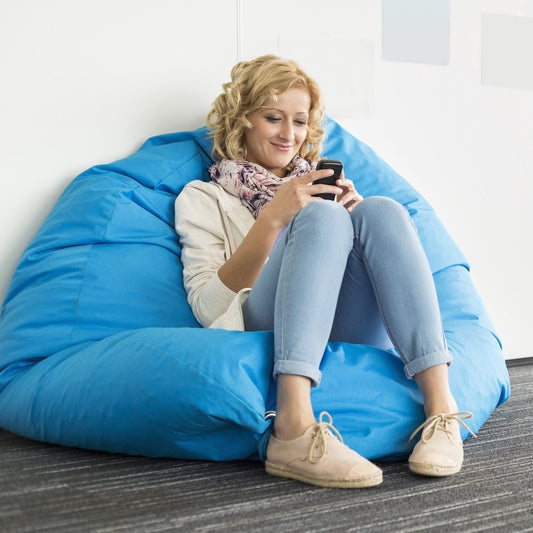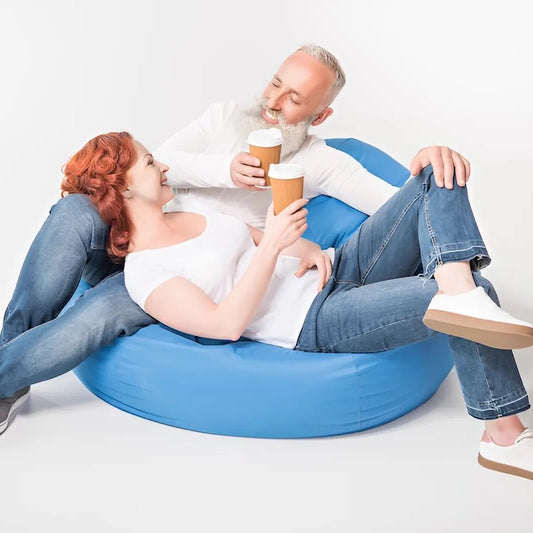At some point in your life as a pet owner, the time will inevitably come when you have to clean dog urine off couch cushions. Pooches are generally okay with their bathroom habits, but they're not perfect. And so when you get dog pee on hte coucg, you need to be ready. The same is true for people who host guests who bring their dogs with them. You need to be ready to clean up if your pet has a little accident on your upholstery. Dogs can urinate on your couch cushions for all sorts of reasons. If they're older, they may be a little incontinent from time to time. Younger dogs can be inconsistent with their bathroom habits, not knowing when they need to go outside. Sometimes, just a sudden change in environment - like moving house - or an illness can bring on problems. Fortunately, even if your dogs are peeing on your couch cushions, there's no need to panic. In this step-by-step guide, we show you how to easily and quickly deal with the problem to keep your furniture smelling fresh and beautiful. Take a look below.
Clean Dog Urine Off Couch Cushions: Step-By-Step
Dog urine on your couch cushions seems like a disaster. For many people, it's a reason to dump their sofa in the trash and start over. But you don't have to take such drastic action. Just like when children create a mess, it's easy to clean up and move on with your life. It's just a question of know-how.
Step 1: Blot The Urine
The first step is to blot the urine with an absorbent material that you have to hand. Many people use a washable rag or regular kitchen disposable kitchen towels. But, in general, it doesn't matter a great deal which method you use, so long as you do something that draws as much moisture away from your towels as possible. If you happen to have a microfibre cloth with you, use that first. Microfibre cloths create a positive charge (thanks to the way manufacturers arrange their fibres) which literally pulls water out of the material thanks to the charge they create. This way, you can often suck excess liquid out of your couch cushions, making the job of cleaning them up later significantly easier. You can also try using a wet/dry vacuum. These use the power of suction to draw liquids away from fabrics. However, you'll need to carefully clean the cylinder afterwards to prevent any odours from lingering.
Step 2: Spray And Reblot
The next step is to spray and reblot the site of the urine stain. Start by using a regular spray bottle and then spray clean water onto the site. Then use your cloth or towels to blot it dry again. You can repeat this step several times if you wish. The purpose of re-wetting the stain is to ensure that you remove as many odour-producing particles from the fabric as possible. By respraying the affected site, you can dilute the remaining particles in the fabric and then draw them out as you blot.
Step 3: Create A Cleaning Solution
Blotting and reblotting can remove a vast quantity of urine stains. But no matter how many times you repeat the process, some particles will remain. If you don't treat these, they will eventually begin to create unpleasant smells. Thus, it would help if you made a stain cleaning solution. Here's what you need to:
- Fill a bowl with half a cup of warm water (about 125 ml)
- Add half a cup (125 ml) of plain white vinegar
- Add a quarter of a cup (70 ml) of dish soap
Mixing these ingredients should create a bubbly, frothy (and quite pungent) mixture. If you're worried about vinegar leaving a lingering smell, don't. Once it evaporates, no smell particles remain. So even if you spill vinegar on your couch cushions, the odour will leave them once it dries. Vinegar is a special chemical because it reacts with many of the odour-causing compounds in dog urine. As it penetrates upholstery, it causes reactions that lead to the production of smell-free byproducts. It also destroys any lingering bacteria in the stain (great if it has been there for some time).
Step 4: Spread The Cleaning Solution Over The Affected Area
You can apply your cleaning solution using a dry cloth. As you spread it, it will generate foam. Don't worry about the foam for now. Instead, focus on working the solution into the fabric. The goal is to get it to contact any remaining pee stuck deep within the material. Some people like to work the foam into their cushions using a toothbrush. Toothbrush bristles are soft, so they don't damage fibres in the upholstery. Plus, the gentle brushing action agitates the cleaning solution, forcing it to go deeper and deeper. You should notice that it starts to create foam as you apply the solution and rub it in. It foams because of foaming agents in the dish soap. Although manufacturers typically include these agents for effect, they can actually help tremendously when cleaning up dog urine. As you brush, you'll see discoloured foam rising out of the fabric, bringing any stains with it.
Step 5: Remove Dirty Foam With A Spatula
After a while, you'll have enough foam to remove with a spatula (or another gentle tool with a flat surface). Just run the spatula through the excess soap and dispose of the residue. If the option is available to you, you can try squeezing the soap out of the fabric. Don't worry if a small amount remains. You can deal with it later.
Step 6: Spray With White Vinegar
Vinegar makes a great cleaner because it is high in acetic acid. The acid is so powerful that it can dissolve dirt, grease, and mineral deposits - a component of dog pee. It also kills bacteria, making it a great option for anyone wanting to clean up a dog mess. Start by filling a spray bottle with pure vinegar. Then spray it directly only on the affected site. Don't worry - it won't damage your upholstery even if you apply it straight. Interestingly, many store-bought cleaners use acetic acid in their formulations because it is both mild and effective. It is not a good idea to use other forms of vinegar - such as balsamic - as these contain stain-producing compounds. As before, let the vinegar dry into the fabric. This time, don't attempt to wipe it up. As it penetrates the layers of the fabric, it will clean dog urine lower down by reacting with mineral salts that it contains.
Step 7: Sprinkle Baking Soda Onto The Area
The second to last step is to sprinkle a small amount of baking soda onto the affected site. Baking soda is a powerful neutralising and drying agent. Its chemical properties mean that it can restore both acid and alkaline substances to regular pH - the main secret behind its extraordinary ability to remove odours. Unlike perfumes, it doesn't mask unpleasant smells - it actually changes their chemical properties to stop them from smelling altogether. Baking soda is also a drying agent. Because it reacts so powerfully with vinegar, it helps draw it out of the material, bringing it to the surface. As it does this, the couch cushions begin to dry out again. When you mix baking soda with vinegar, the results can be even more dramatic - the two chemicals release H and OH to form harmless water. So the baking soda neutralises the acid, creating harmless byproducts in the process. Please note that baking soda and baking powder are not the same things, so you shouldn't use them interchangeably. When cleaning, always use baking soda, as this has the chemicals required to neutralise vinegar and transform it into the water again.
Step 8: Allow Baking Soda To Dry And Vacuum
The last step is to allow the baking soda to dry on the couch naturally and vacuum it up. Usually, it'll take about two hours to completely dry. It'll continue fighting odour-causing compounds, reacting with them, and eliminating them from the fabric during this time. When it is completely dry, you can remove it with a vacuum, as you would any other debris on your sofa. And there you have it: the best way to remove fresh dog urine from couch cushions.
How To Remove Old Dog Urine From Couch Cushions
If you have older dog stains on your cushions that you only notice a couple of days (or weeks) later, then you may need to modify your approach. Simple cleaning with vinegar and baking powder may not work. Here's what to do:
Step 1: Create The Cleaning Solution
You will need something a little more powerful than regular vinegar and baking soda for old, dried-on stains. Here's a formulation you could try:
- 300 ml hydrogen peroxide pure cleaning fluid
- 45 ml baking soda
- A few drops of dish soap
Once you have the mixture, pour it into a spray bottle.
Step 2: Test The Fabric
Because hydrogen peroxide is a highly reactive compound, you'll need to test the spray first to see how it reacts with the fabric. Start by spraying it on an inconspicuous area of your sofa and see whether it discolours or alters the fabric in any way. If it does, you'll want to use the method for cleaning dog urine described in the previous section. If it doesn't, then continue to the next step.
Step 3: Spray Onto The Affected Area And Allow To Dry
If you're confident that you're not going to damage the fabric spray, put the solution onto the affected area and then allow it to dry. You should notice that after about an hour or so, the stain begins to look faded. If it doesn't disappear entirely, wait for it to fully dry and then respray it. The stain should fade a little more each time you spray it.
Step 4: Blot The Solution
Once the stain disappears, you can remove the cleaning agent by blotting the area with a damp cloth. Using a wet microfibre cloth will draw any remaining moisture in the fabric back out again, mixing with the cleaning fluid and detergent residue. You may notice that the resulting residues are actually quite dirty from all the grease and grime on your cushions. In some cases, you may not be able to remove the stain from your sofas, beanbags and other places where dogs might urinate. In these situations, hiring out professional cleaners is an option. However, it is not always strictly necessary, especially if you follow the methods laid out above.
How To Clean Dog Urine: The Bottom Line
Dogs will occasionally pee where they shouldn't, but it needn't spell disaster for your upholstery. Yes - it isn't very pleasant. But ultimately, urine is a natural stain and something you can use simple methods to remove. The biggest risk with dog urine is the lingering smell, so any cleaning formulation you concoct must contain antibacterial agents. (White vinegar and hydrogen peroxide are the two examples that we list here). If you decide to experiment by making your own cleaning solutions, make sure that you avoid using any chemicals containing bleaching agents. Bleach is great for killing germs in your toilet. But if you apply it to upholstery, you risk discolouring the material and permanently damaging your seating. New urine stains are easy to find and clean. However, older ones can be more difficult. If you're struggling to identify the source of smells emanating from your sofa, you can use a UV urine-finder - something that a lot of dog owners invest in when they get a pup. This simple light bounces off dog urine patches and reflects in visible light, allowing you to see it.




